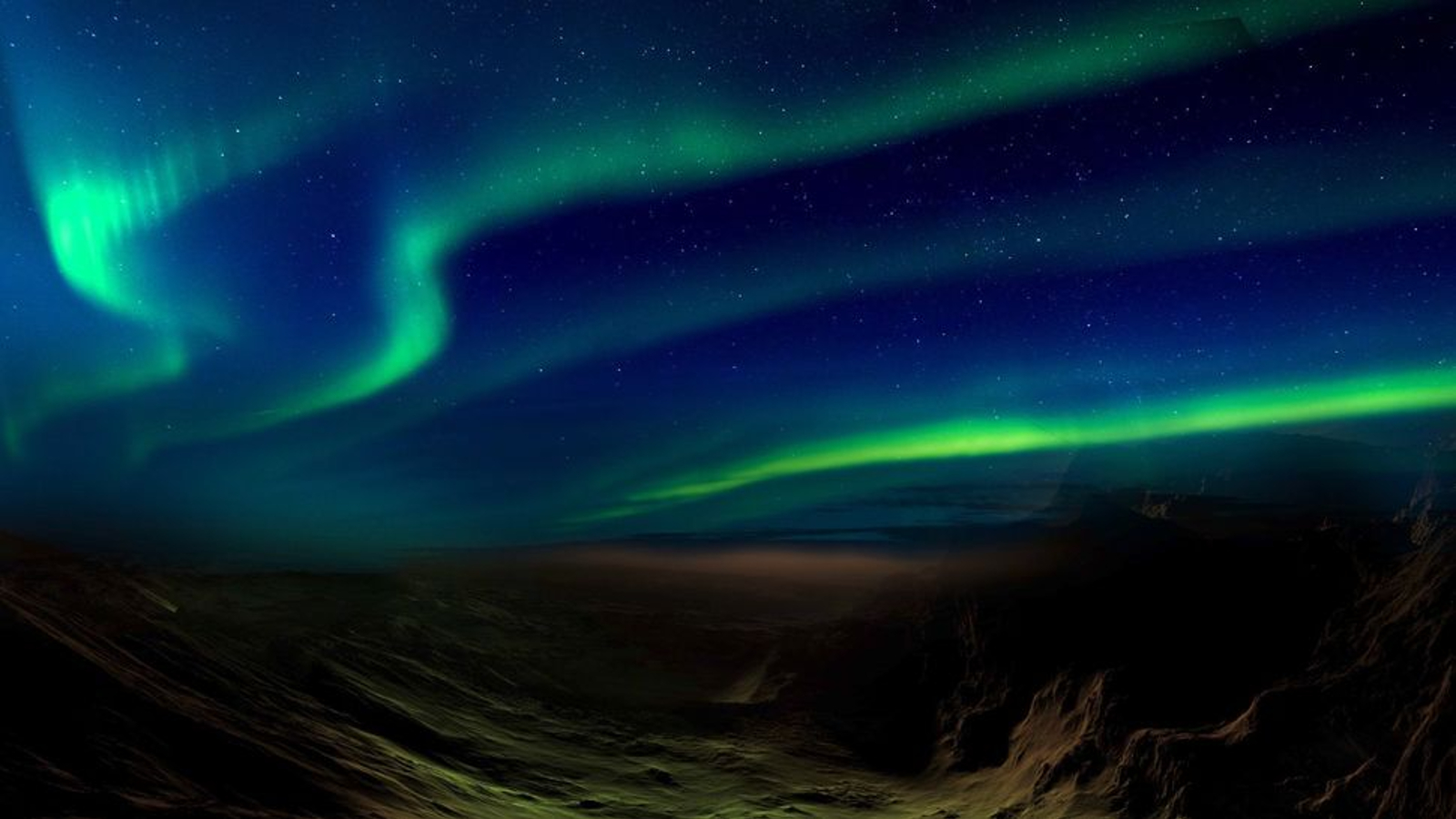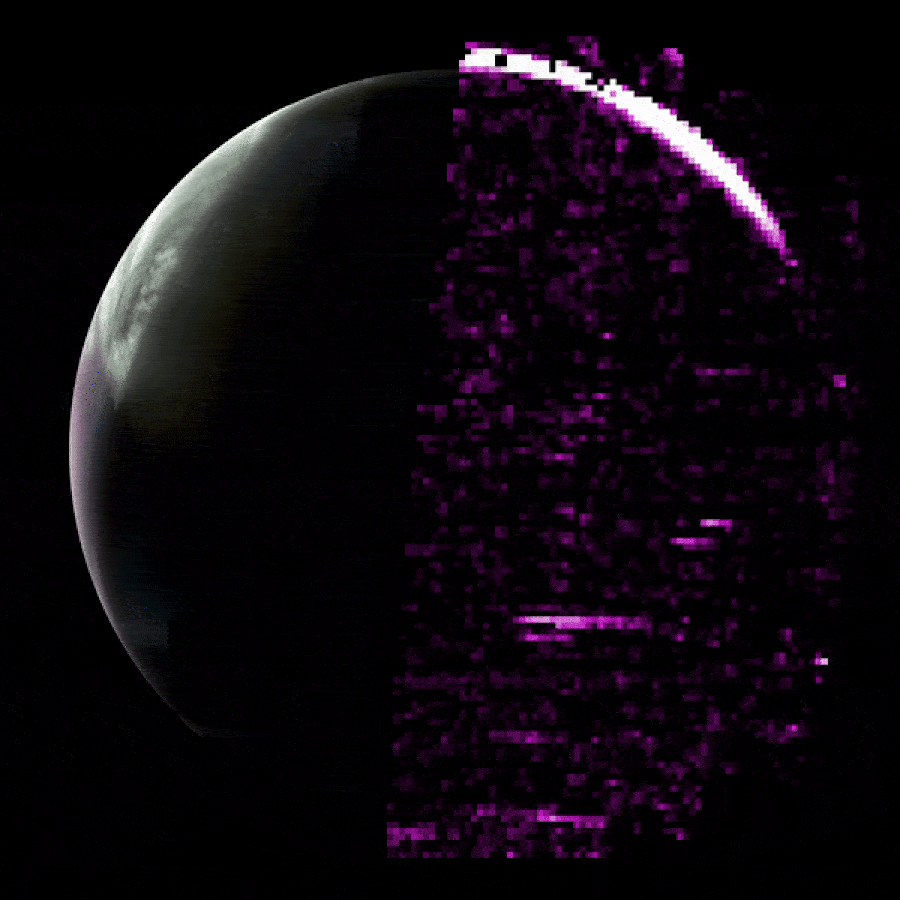Sun's chaotic peak triggers record-breaking 'global auroras' on Mars
Mars has had frequent planet-wide auroras in recent months, including an unprecedented trio of events in February. Experts say the sudden increase is the result of the ongoing solar maximum.

Invisible "global auroras" have been covering Mars frequently over the past few months, according to data collected by a NASA spacecraft. The rise in these planet-wide light shows, including an unprecedented "aurora hat trick" in February, is tied to solar maximum, the peak in the sun's roughly 11-year solar cycle.
Mars is no stranger to auroras. The planet is often bombarded with high-energy radiation from the sun, known as solar energetic particles (SEPs), which penetrate the red world's thin atmosphere and excite molecules of hydrogen, causing them to emit light, similar to how auroras work on Earth. However, unlike the southern and northern lights on our planet, Martian auroras — also known as proton auroras — emit ultraviolet light instead of visible light, meaning they cannot be seen with the naked eye.
NASA's Mars Atmosphere and Volatile Evolution (MAVEN) spacecraft, which has been orbiting the Red Planet since 2013, detected the first proton auroras on Mars in 2016. Most of the auroras observed by MAVEN have been localized to specific regions, but every once in a while, these invisible light shows cover an entire hemisphere that is facing the sun. When this happens, researchers call it a global aurora.
In recent months, the number of global auroras and other auroral activity have risen significantly, Spaceweather.com reported.
"Mars is experiencing its greatest level of auroral activity in the past 10 years," Nick Schneider, a planetary scientist at the University of Colorado Boulder and lead scientist of MAVEN's Imaging Ultraviolet Spectrograph instrument group, told Spaceweather.com. "In February alone, there were three episodes of global auroras — an 'aurora hat trick' we've never seen before."

The global aurora events can last several days; the triple February auroras occurred on Feb. 3-4, Feb. 7-10 and Feb. 15-16. Although these light shows could not be seen directly, researchers used MAVEN data to visualize the auroras (see below).
Mars is not the only planet other than Earth to have auroras. Similar light shows have been spotted on Mercury, Jupiter, Saturn and Uranus, according to Live Science's sister site Space.com. Last year, scientists also spotted aurora-like phenomena on the sun for the first time.
Sign up for the Live Science daily newsletter now
Get the world’s most fascinating discoveries delivered straight to your inbox.
But very few solar system auroras encompass an entire planet (or star) like the recent Martian auroras. The Red Planet is particularly prone to global auroras because it no longer has a complete magnetic field, which would normally shield the dusty world from solar radiation. As a result, it is much easier for SEPs to flood right across what's left of Mars' atmosphere.
Related: Hundreds of black 'spiders' spotted in mysterious 'Inca City' on Mars in new satellite photos
Experts think the current rise in Martian auroras is the result of coronal mass ejections (CMEs) — clouds of magnetized plasma and radiation that get ejected from the sun by powerful explosions known as solar flares. CMEs contain high levels of SEPs, which can bombard Mars if these solar eruptions are oriented toward the planet.
The sun is currently spitting out CMEs at its highest rate in more than a decade, suggesting that solar maximum may have begun more than a year earlier than initially predicted.
"Mars is currently getting hit by roughly one to two CMEs every month, bringing a hefty supply of SEPs," Rebecca Jolitz, a member of MAVEN's Solar Energetic Particle instrument team at the University of California, Berkeley, told Spaceweather.com. The solar storms also don't have to hit the planet head-on to trigger auroras, she added. Even a glancing blow can spark global auroras if enough SEPs are dumped into the planet's wispy atmosphere.
The MAVEN team will keep a close eye on Mars over the next few years in hopes of seeing even more global auroras. "Solar Cycle 25 is far from over, and we expect many more CME strikes," Schneider said. "This will give us a chance to study how solar storms affect the atmosphere of Mars."

Harry is a U.K.-based senior staff writer at Live Science. He studied marine biology at the University of Exeter before training to become a journalist. He covers a wide range of topics including space exploration, planetary science, space weather, climate change, animal behavior and paleontology. His recent work on the solar maximum won "best space submission" at the 2024 Aerospace Media Awards and was shortlisted in the "top scoop" category at the NCTJ Awards for Excellence in 2023. He also writes Live Science's weekly Earth from space series.









